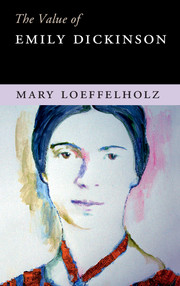
- Cited by 13
-
Cited byCrossref Citations
This Book has been cited by the following publications. This list is generated based on data provided by Crossref.
Cohen, Michael C. 2019. The New Emily Dickinson Studies. p. 33.
Kohler, Michelle 2019. The New Emily Dickinson Studies.
2020. Emily Dickinson: Poetics in Context. p. 52.
2020. Emily Dickinson: Poetics in Context. p. 117.
2020. Emily Dickinson: Poetics in Context. p. 238.
2020. Emily Dickinson: Poetics in Context. p. 250.
2020. Emily Dickinson: Poetics in Context. p. 1.
2020. Emily Dickinson: Poetics in Context. p. 78.
2020. Emily Dickinson: Poetics in Context. p. 157.
2020. Emily Dickinson: Poetics in Context. p. 248.
Hubbard, Melanie 2020. Emily Dickinson: Poetics in Context.
2020. Emily Dickinson: Poetics in Context. p. 20.
Zapf, Hubert 2024. Amerikanische Literaturgeschichte. p. 105.
- Publisher:
- Cambridge University Press
- Online publication date:
- June 2016
- Print publication year:
- 2016
- Online ISBN:
- 9781316018705
- Subjects:
- Literature, Area Studies, American Literature, American Studies, English Literature after 1945
- Series:
- The Value of


